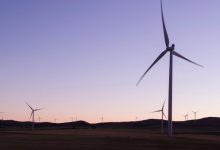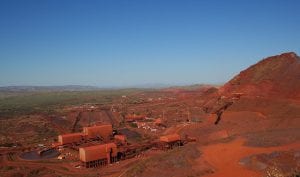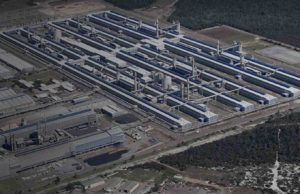The extraordinary pace of the renewable energy transition in South Australia has been highlighted by new data from the Australian Energy Market Operator, which shows that electricity generated from renewables exceeded state demand every second day in 2021.
In South Australia renewables means only wind and solar, as there are no other renewable sources in the state – no hydro and no geothermal.
In 2021, according to the AEMO data, wind and solar accounted for 63.4 per cent of total generation within the states. Another 0.7 per cent came from battery storage, much of that charged up by renewables. Fossil fuels, in this case gas, fell to just 35.7 per cent.
The share of wind energy was 43.9 per cent, the share of utility scale solar was 4.6 per cent, while rooftop solar accounted for 14.9 per cent.
Other countries and distinct grids have greater shares of wind energy, but it is the combination of wind and solar, and the penetration of rooftop solar, that makes South Australia the leading gigawatt scale grid in the world.

That share of renewables is expected to increase dramatically in coming years. The state Liberal government has a target of “net 100 per cent” renewables by 2030, but the reality is that it will reach that target well before then.
The construction of a new transmission link to NSW, the $2.3 billion Project EnergyConnect, will dramatically increase the number of wind and solar projects providing electricity to the local grid because it will allow more production to be exported, rather than curtailed.
The Port Augusta Renewable Energy Park, the largest wind and solar hybrid project in the country with more than 200MW of wind and 110MW of solar, will join the grid soon, while the Tailem Bend solar farm will double inn size, and the first 412MW wind stage of the massive Goyder South hybrid project has begun construction.
More big batteries, such as the one being built at Torrens Island, and numerous others planned for the grid, including a 900MW, two hour battery at Goyder South, will also be able to absorb excess production.
Also, newly installed synchronous condensers, which provide much needed grid services such as “system strength” means that AEMO no longer has to force gas generation into the grid at times of high renewables.
New big batteries with “grid forming inverter” technologies, such as the new Torrens battery being built in South Australia, will be able to provide much, if not all, of that “system strength” requirement.

AEMO’s posting on Twitter also confirms two other previously revealed milestones.
These included the highest amount of renewables compared to demand in a single day (135 per cent, recorded on November 27), and a new low of “operational demand” of 104MW, recorded on October 31, when rooftop solar accounted for 92 per cent of underlying demand.l








